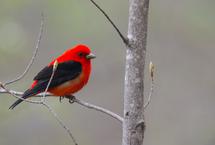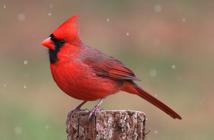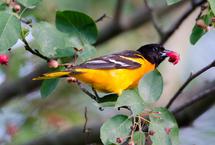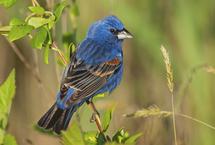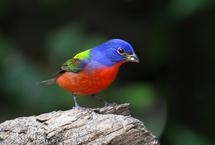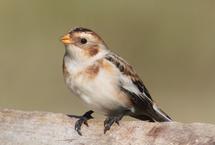saveourplanetearth.com
Call us: (775) 831-1331
Colorful Birds of Other Areas
Banish the Winter Blahs with Color
One thing I enjoy when traveling is trying to spot and identify bird species that are not found in my backyard, because, as diverse as the wildlife is here at Lake Tahoe, including that of the avian persuasion, we most certainly do not have it all.
Today let’s travel to other regions and explore some of the more colorful birds.
A striking bird found all over the United States, except for the West, is the Northern Cardinal. The male of this species is red with a black face. As is typical with birds, the female is less vibrant—a dull olive-red with a grey mask. Both sexes have a prominent crest and a thick orange bill.
Cardinals don’t migrate, nor do they molt into dull non-breeding plumage, so they stand out in the winter scape.
Cardinals eat mainly seeds, but will also eat insects and fruit. During breeding season, the male stakes out his territory with song, belting out his loud, clear whistle from a prominent perch.
During courtship, the male feeds the female seeds, beak to beak. This is a male she can count on, as they mate for life and remain together year-round.
The male will bring twigs and other materials to the female, who does most of the building of the nest. She creates a cup with four layers: coarse twigs covered with a leafy mat, lined with bark, and finally a layer of grasses and roots. The nest takes about a week to build. Three or four eggs are laid, incubated mainly by the female, hatching 12 days later.
A brilliantly red bird found in the Eastern United States is the scarlet tanager. The male during summer months has a bright red body with jet black wings. As bright as he is, he is hard to spot as scarlet tanagers, like the Western tanager, spend their time foraging in the tree tops.
In the fall, the males molt to yellow-green and begin migration to Mexico, Central and South America for the winter.
The Baltimore oriole is another bird found all over the United States, even into Canada, but is not found in the West.
This oriole is brightly colored orange, has black wings with a white wing bar, and a black head. He also forages in the tree tops, searching for insects and fruit. Lucky Easterners put out orange halves to attract this bird to backyard feeders. In the fall, the oriole heads to South America.
During December and January, Mexico, Central America and the northern areas of South America must be a cornucopia of colorful birds—something to think about for that next adventure.
A blue beauty found mainly in the southern half of the United States and into Mexico is the blue grosbeak. Despite his bright blue color, this bird is also hard to spot, as he perches in the bushes and forages on the ground amid low vegetation, eating mainly insects and seeds.
The blue grosbeak is a stocky songbird with a triangular bill and tiny black mask covering his face, and chestnut wing bars.
This bird has been expanding his breeding grounds into the north in the past decade so maybe he will eventually make his way to Lake Tahoe.
A bird sporting all the above colors and more, found in the southern states, Mexico and Central America, is the painted bunting. This bird has a blue head, red belly with a green and yellow back.
In the same family as the painted bunting, yet starkly different, is the snow bunting, which makes its home in the northernmost reaches of North America, Canada and the high Arctic. This bird is snowy white with brown and black accents. This amazing bird breeds in temperatures below zero.
Today we’ve talked about birds in most every color from South America to the high Arctic. When traveling, prepare to feast your eyes on birds I’ve only seen in pictures. To see images of all these birds and to learn more, visit allaboutbirds.org.
Coming back to Planet Tahoe, remember the Bald Eagle Survey, taking place locally, Friday, January 8, at various locations around Lake Tahoe. See tinsweb.org for details and to sign up. Tahoe Institute for Natural Science is still looking for volunteers to help with this important project.
Northern Cardinal
Scarlet Tanager
Baltimore Oriole
Blue Grosbeak
Painted Bunting
Snow Bunting



